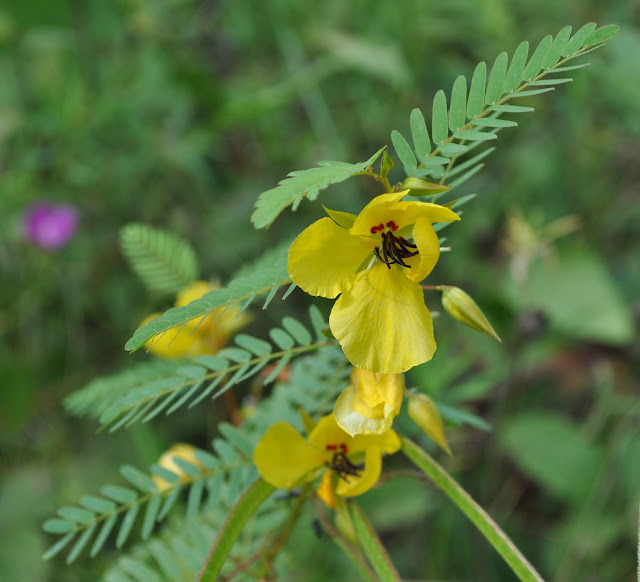Florida Flora Friday: American Beautyberry (Callicarpa americana)
Welcome back to Florida Flora Fridays! This time, we're talking about the American beautyberry, a native shrub with gorgeous purple berries in the fall and winter. I remember the first time I'd ever seen one and I was like, "Oh my goodness, what in the hell is that?!".
Here's a picture of the berries (not mine) and I think you'll agree that it's incredibly striking!
American Beautyberry (Callicarpa americana)
American beautyberry is a native shrub found throughout the Southeast. You'll also find it in some central states, and its native range encompasses both Cuba and Bermuda. It grows 4 to 8 feet tall and can get up to 6 feet wide. It has a weeping growth habit, so if you're planning on putting it in your landscape, it does well as a specimen plant, but also works well in informal settings.
In South Florida, it's an evergreen shrub, but in areas with colder temps, it's deciduous. In terms of planting, it's not very picky, which I love. Dry, moist, sun, partial shade - it's good with whatever once established. It's also easily pruned (and some sources recommend pruning back in the winter to encourage it to get fuller).
American beautyberry forms flowers at multiple points along its long stems. White/pink when blooming, they eventually turn into tight clusters of purple berries after they've been pollinated. Speaking of pollinators, it's very attractive to lots of our natives, including Agapostemon splendens, which I've covered in a post here!
The berries are edible for humans, too, and have been used to make everything from jelly and gelatin (vegan!) to wine. Note that they're not particularly tasty on their own but develop a floral flavor when combined with sugar. The rots are medicinal and were used by Native Americans for dysentery and stomachaches, as well as to treat colic. The leaves can be crushed and used as a natural mosquito repellent, too.
The plant is an important food source for birds, squirrels, deer, and other wildlife in the fall and winter when there are few other options. It's also the larval host for spring azure butterflies, as well as snowberry clearwing moths.
If you'd like more info, check out the entries from the Florida Wildflower Foundation and the Florida Native Plant Society.

.jpg)


I love learning and hope to add to my pollinator garden every year. I’ll be researching what is best for the Louisville area.
ReplyDeleteThat's awesome! Supporting pollinators with native plants is one of the most important things we can do. The Kentucky Native Plant Society looks like a great place to learn more (https://www.knps.org/). I joined the Florida Native Plant Society early this year and it's been amazing - tons of info and free native plants! Plus, getting to know others in my local area.
Delete